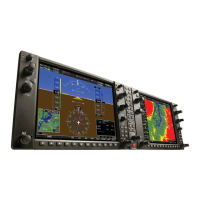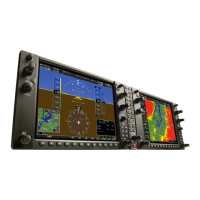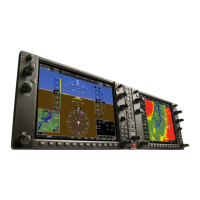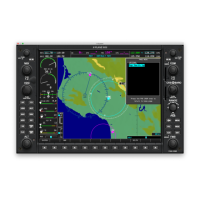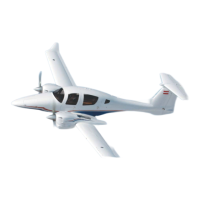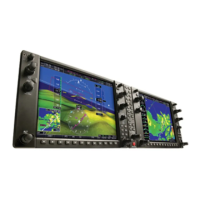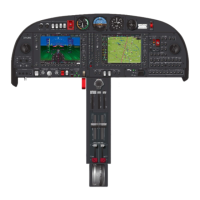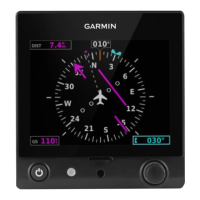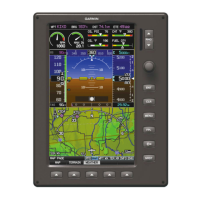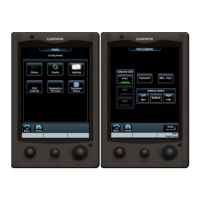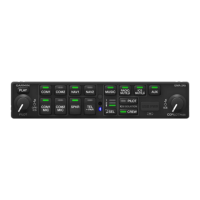190-00709-05 Rev. D
Garmin G1000 Pilot’s Guide for the Socata TBM 850/900
327
FLIGHT MANAGEMENT
5.12 ABNORMAL OPERATION
This section discusses the Dead Reckoning mode of operation and the subsequent indications.
NOTE: Dead Reckoning Mode only functions in Enroute (ENR) or Oceanic (OCN) phase of flight. In all other
phases, an invalid GPS solution produces a “NO GPS POSITION” annunciation on the map and the G1000
stops using GPS.
While in Enroute or Oceanic phase of flight, if the G1000 detects an invalid GPS solution or is unable to
calculate a GPS position, the system automatically reverts to Dead Reckoning (DR) Mode. In DR Mode, the G1000
uses its last-known position combined with continuously updated airspeed and heading data (when available) to
calculate and display the aircraft’s current estimated position.
It is important to note that estimated navigation data supplied by the G1000 in DR Mode may become increasingly
unreliable and must not be used as a sole means of navigation. If while in DR Mode airspeed and/or heading data
is also lost or not available, the DR function may not be capable of accurately tracking estimated position and,
consequently, the system may display a path that is different than the actual movement of the aircraft. Estimated
position information displayed by the G1000 through DR while there is no heading and/or airspeed data available
should not be used for navigation.
DR Mode is inherently less accurate than the standard GPS/SBAS Mode due to the lack of satellite measurements
needed to determine a position. Changes in wind speed and/or wind direction compound the relative inaccuracy
of DR Mode. Because of this degraded accuracy, other navigation equipment must be relied upon for position
awareness until GPS-derived position data is restored.
DR Mode is indicated on the G1000 by the appearance of the letters ‘DR’ superimposed in yellow over the
‘own aircraft’ symbol as shown in Figure 5-155. In addition, ‘DR’ is prominently displayed in yellow on the HSI
slightly above and to the right of the aircraft symbol on the CDI as shown in Figure 5-155. The CDI deviation
bar remains, but is removed from the display after 20 minutes in DR Mode. The autopilot will remain coupled
in DR mode as long as the deviation info is available (20 min.) Lastly, but at the same time, a ‘GPS NAV LOST’
alert message appears on the PFD. Normal navigation using GPS/SBAS source data resumes automatically once
a valid GPS solution is restored.
As a result of operating in DR Mode, all GPS-derived data is computed based upon an estimated position and
is displayed as yellow text on the display to denote degraded navigation source information as shown in Figure
5-155.
Also, while the G1000 is in DR Mode, TAWS, Terrain SVS or Terrain Proximity are disabled. Additionally, the
accuracy of all nearest information (airports, airspaces, and waypoints) is questionable. Finally, airspace alerts
continue to function, but with degraded accuracy.
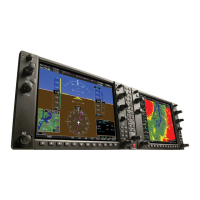
